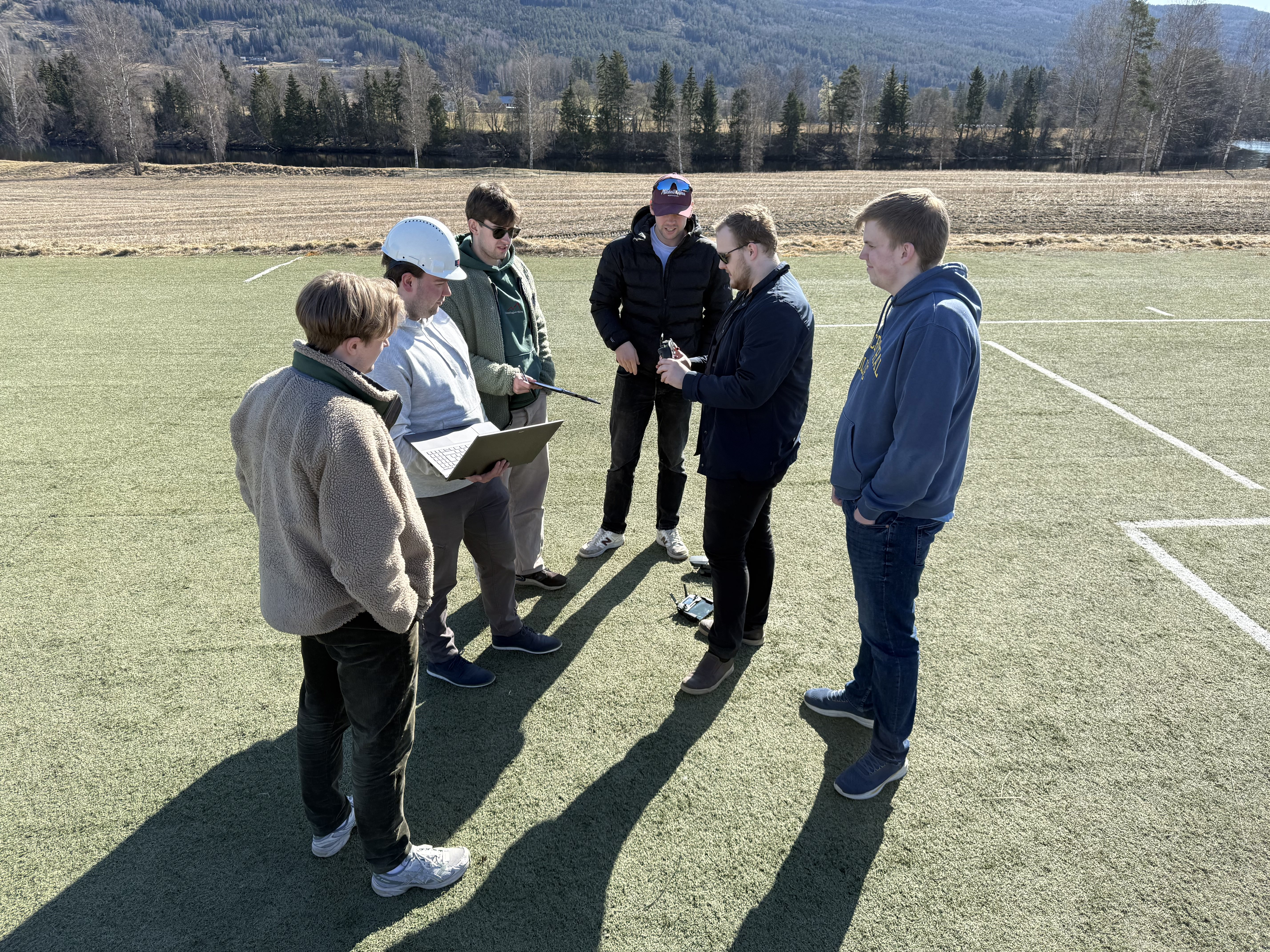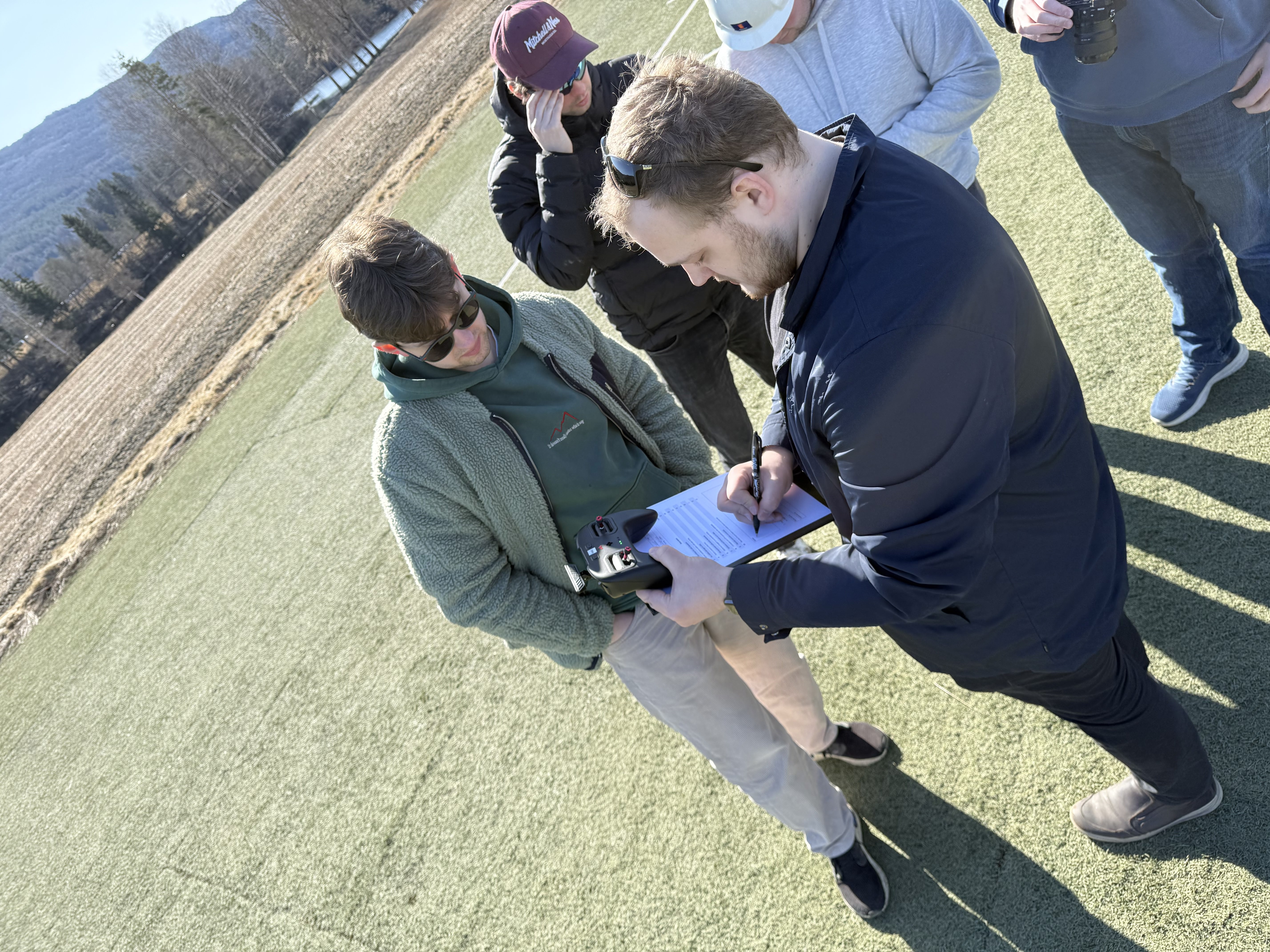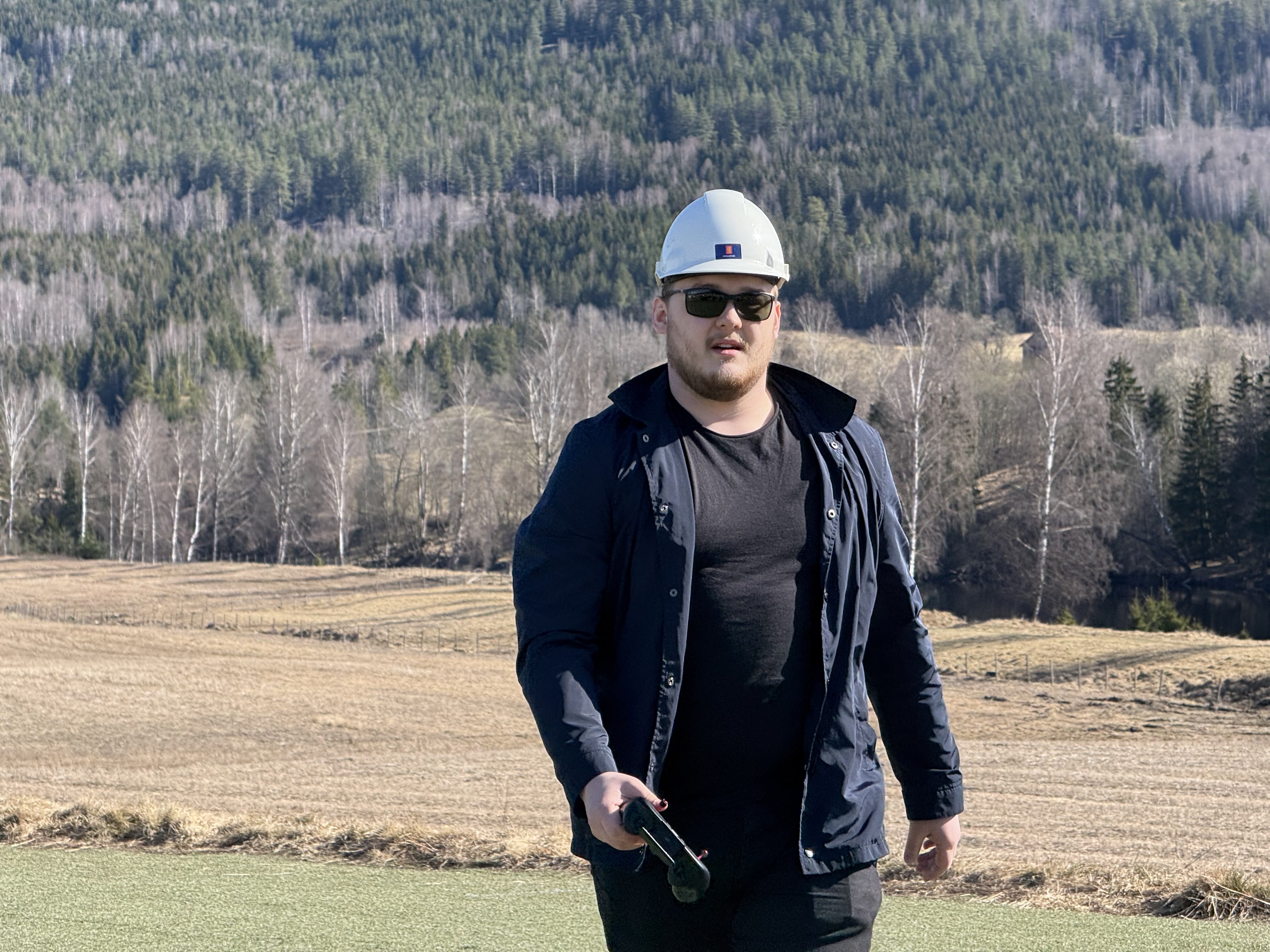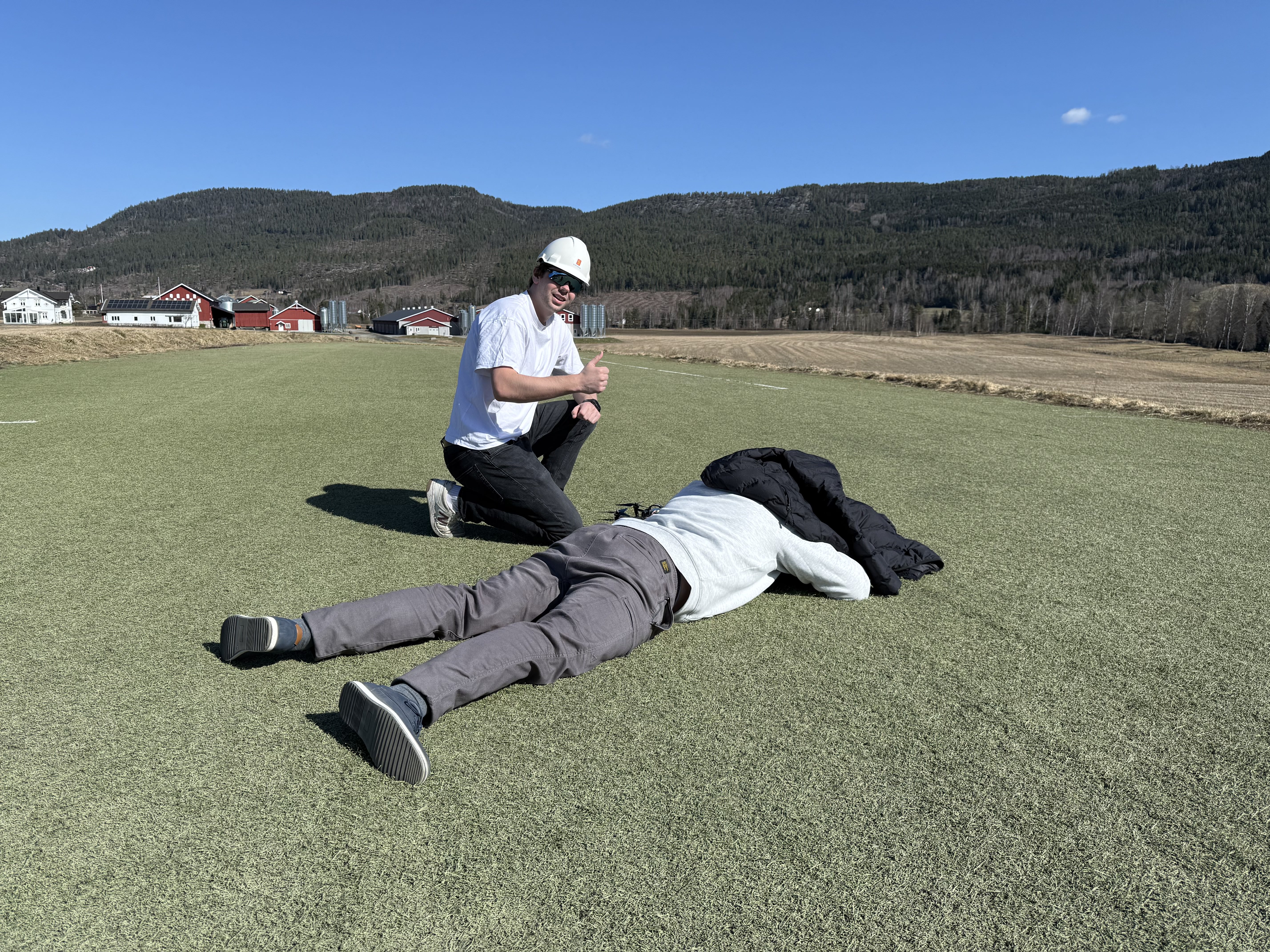On the absolutely gorgeous day that was Tuesday, the 8th of April, we went down to the local airstrip for "Kongsberg Modellflyklubb" to finally get some tests done. The purpose of this test day was not to see the system work as a whole, but testing the capabilites of the drones. We performed tests where they were flown manually with a controller, to see how steady they were in flight and to test the different flight modes they support. After this we began testing the autonomous flight modes, which when we realized that the GPS issues are still present. Kestrel One refused to cooperate entirely, so we never got it to connect with the GPS and fly autonomously. Kestrel Two managed to connect after a solid 20 minutes of restarts, so we finally got to try some autonomous flying. Luckily we have learned from ModalAI that there are known GPS issues on these current drone models, so at least we know that it is not our fault.
With his experience from Local Hawk, our supervisor Jonathan kept a close eye on everything we did. At the end of the day he gave us some feedback on what was done well, and what could be done more efficiently.

The schedule followed a series of different tests planned by the group in advance, starting with simple manual control test to more autonomous flight modes. Any noteworthy observations made during these tests were written down.

Being the only team member with a drone liscense (so far), Ruben was the pilot for the day. All manual tests were performed under his control, and during autonomous test he always stood ready with the controls to take over in case of emergencies. Does this give "Top Gun" vibes or what?

Ruben also brought his own drone, which was a good reference point to see how a well calibrated and configured drone flies.

This video showcases Kestrel Two performing an autonomous flight pattern. Its instructions were to take off from the middle of the airfield, fly to one side, fly back to the opposite side, then return home to the middle and land the same place that it took off. Using the white line on the grass as a reference point we can see that there a few meters between where it took off and where it landed. Increasing this precision so that it can land perfectly within a small dispenser will possibly be the trickiest part of the entire project.
These flight tests helped us check the accuracy of sensors and telemetry onboard both drones. One thing we quickly noticed was the inaccuracy in altitude readings. QGroundControl would show readings that we could easily see with the naked eye were not correct, as you can hear Kristian and Ruben talk about during its flight in the video below.
